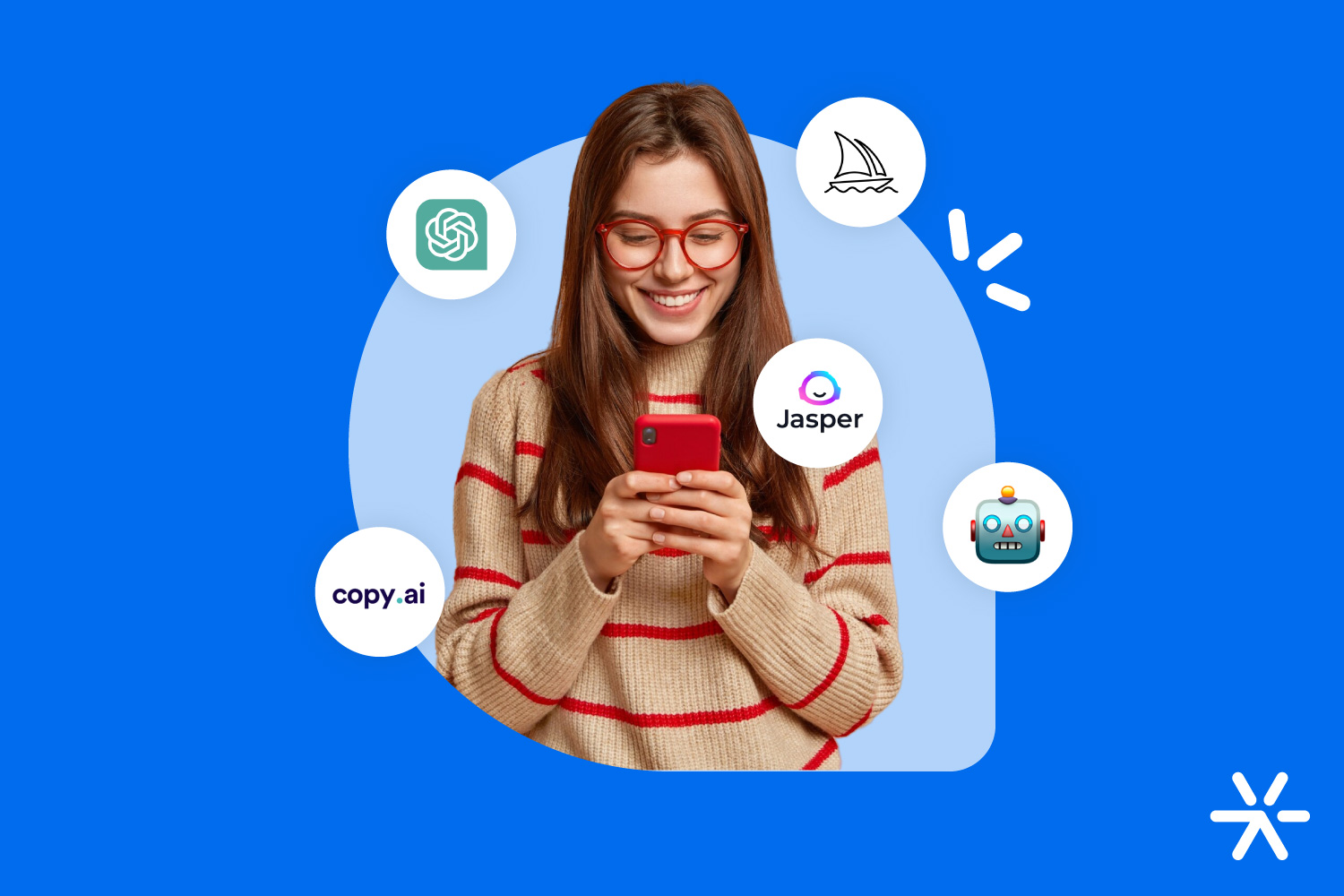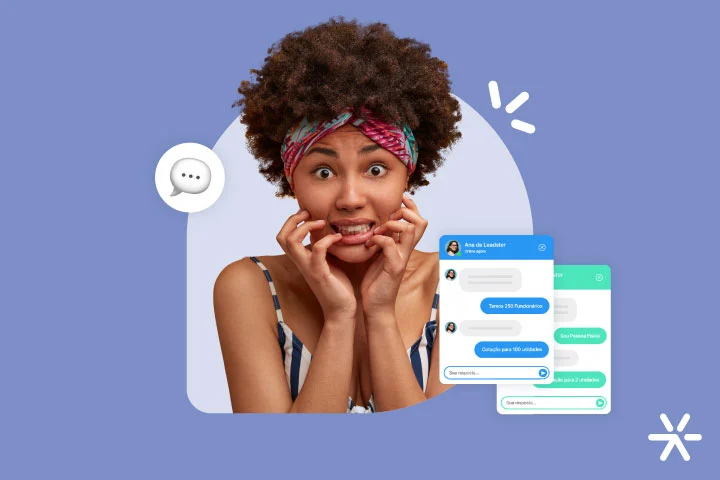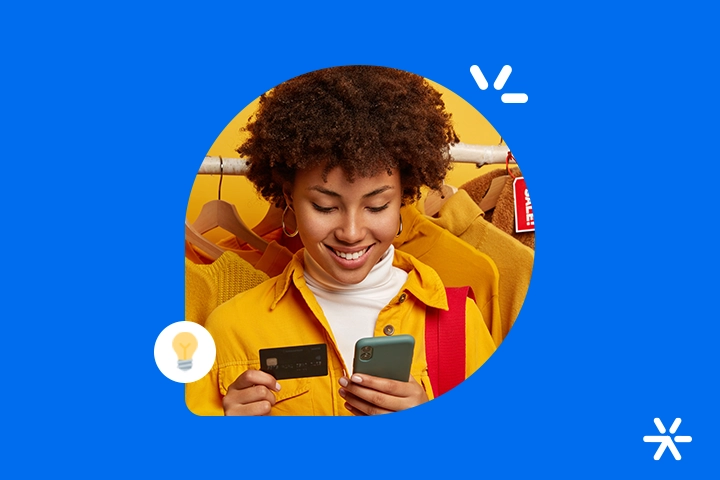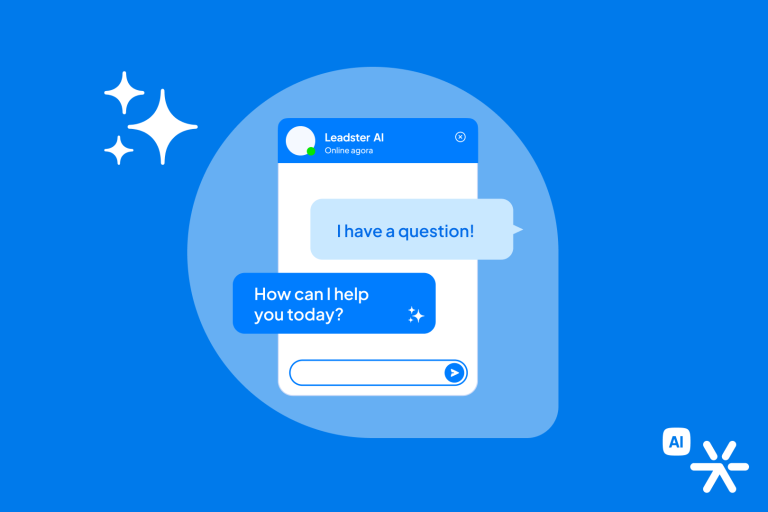What’s the Future of Marketing Post-AI ? 7 Data Points and 8 Trends
He future of marketing changes every day, because marketing itself is clways changing.
But what is hardest to change is people. Their ways of living in community, their taste for content, and even the reasons that drive them to buy products.
For instance, nowadays, few people turn on shopping channels in the middle of the night to buy products.
Yet people still consume content aimed at selling those products. In fact, live streams in the style of Polishop are making a comeback in the marketing imagination.
This is to say that while the future of marketing is always being built and evolving, bringing new tools and inaugurating new behaviors…
Much of what is new is inspired by the old, because at the end of the day, we change, but not that much.
In this article, we’ll balance these two points. We’ve brought several studies to better understand how things will be moving forward.
And of course: we’ll talk a lot about AI. All set? Let’s begin:
7 Data Points Showing the Future Path of Marketing

As we just discussed, it’s easier to understand the future of marketing when we have our feet firmly planted in the present.
This way, we can understand how people buy today, what tools they use most, and which ones they are starting to explore.
From this perspective, we can even look back and see how everything has changed.
Take television, for example: at the turn of the millennium, it was clear that people were starting to consume content online, and that television would lose viewers as a result.
But television did not disappear: it remains strong, being one of the world’s largest content producers even today.
In other words: people want to consume content. It’s not that the internet is better than TV; it’s that the internet also has content.
🤿 Dive Deeper: AI content creation: how to do it?
Given this, let’s look at some statistics that paint a clearer picture of the future of marketing:
A Typical User Now Spends 2 Hours and 23 Minutes a Day on Social Media
As expected, the typical user spends more time on social media than on any other site or app: nearly two and a half hours a day, according to DataReportal.
That’s 25% of all the time people spend online, as we saw in the previous data point.
This trend is not likely to change much. Social media is at its peak, being part of not just people’s lives but our globalized culture.
What we often hear is about the need to improve social media, not replace it.
This is quite interesting, as tech giants have already been involved in major scandals, with several documentaries discussing the most questionable tactics they have used.
Ad Spending Hits Record in 2023
In 2023, the total amount spent on digital ads—Social Ads, Google Ads, and other Adtechs—surpassed 700 billion:

To put it in perspective, Cargill, which has the highest gross revenue in the world, earns 177 billion annually.
Meanwhile, the digital marketing sector is nearing its first trillion.
Of course, this is a general total, looking at all companies in the sector combined.
For Search-related research—like Google’s Display Network—this percentage is also growing:
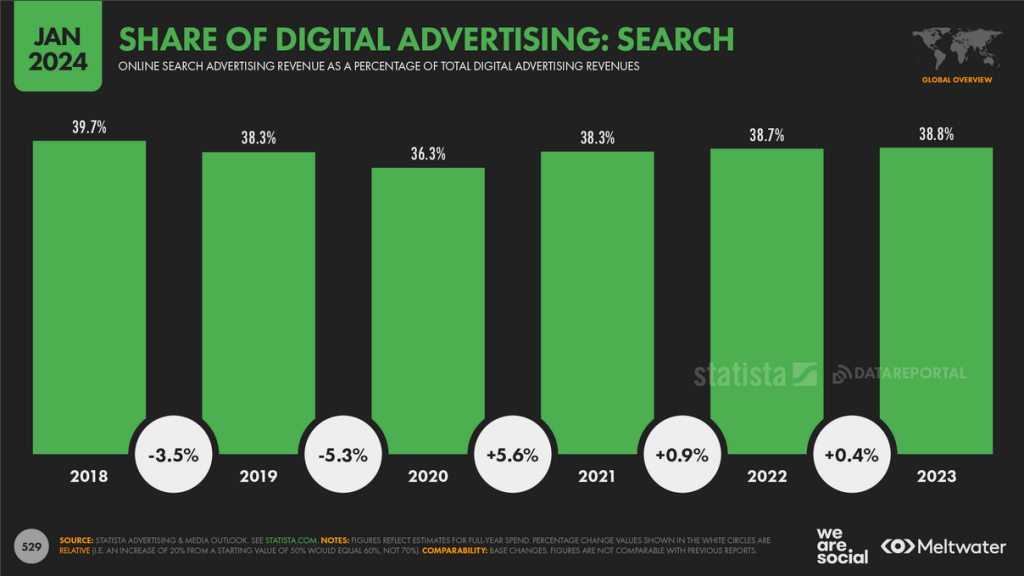
According to this research, there was a 0.4% increase compared to last year, but note that this value surged in 2020!
Today, 80% of People Are Concerned About Their Online Privacy
It’s likely that the end of cookies was just the first step in the fight for online privacy.
Many people consider this concern fundamental—according to Google, 80% of people worry about the information they share online.
The issue is that, as we’ve seen with the end of cookies, this concern extends far beyond photos on social media, contact information, etc.
People no longer want to be tracked. No one wants to use the internet as a product.
The future of marketing concerning privacy is still uncertain. The end of cookies is something Google is currently working on, but it has precedents in other browsers from over 10 years ago.
It’s quite likely that, for 2024 and beyond, we will see more and more initiatives aiming to respect user privacy.
Will it be a new golden age of marketing creativity, which, without data, will need to adapt to achieve its results?
Over 50% of US Companies with more than 5.000 Employees Use Artificial Intelligence in Some Way
AI surged with a bang during the pandemic, and along with the horror stories, came doubts.
On one hand, some people thought AI would do everything, and the world would practically end. On the other hand, some believed it would just be a phase and that no one would use it.
Both were wrong in one way or another. AI hasn’t proven to be apocalyptic, but it hasn’t been completely ignored either.
In the US, only 33% of the companies are using AI. The global median is 42%. But at the same time, over 50% of the companies with more than 5.000 employees are using AI today.
What we’ll see throughout 2024 is significant growth in AI usage, largely because new tools are being created, tested, and sold at a staggering pace.
But what does this mean for the future of marketing as a whole? Let’s understand that now, in the second part of the article.
Shall we?

8 Trends for the Future of Marketing

The future of marketing is always guided by trends that solidify and become the standard way of working.
It has always been this way. Take social media, for example. As they developed and became popular, a new trend emerged: advertising on them.
Today, advertising on social media is basic marketing 101. Fifteen years ago, it was a huge trend, and those who didn’t adopt it were left behind.
The problem with working with trends is that we never know which ones will stick and which will be forgotten.
In this part of the article, we’ll analyze 8 trends that align with the data we presented earlier.
This way, we can merge these two ways of thinking—one exact, the other exploratory—and increase our chances of tracking the right trend.
Let’s get started?
Beware of Privacy and Alternatives to Cookies
A major trend in 2024 is finding alternatives to third-party cookies.
The biggest alternative is definitely first-party cookies, which are collected only on your own site and pertain to user interactions there.
To provide quick context: third-party cookies are installed on websites and collect data from visitors, such as demographics, time spent on the page, interest categories, etc.
When you advertise on Google Ads, you can use these third-party cookies to make your campaigns more effective and precise.
However, these cookies will be phased out by the end of the year. The only ones you’ll have access to are those you install on your own site.
These are called first-party cookies. And they are currently the main alternative to third-party cookies.
We have an article discussing this here at Leadster:
➡️ The End of Third-Party Cookies: What Now?
It’s No Longer Humans vs. AI, But Humans + AI
Machines did not come to replace us. We need to learn to coexist with them.
In 2024, we will finally understand what AI will really do for digital marketing. It exerts significant pressure on the industry, with the potential to replace professionals and even automate creative processes.
But the trend is that this will not happen. It is quite likely that anything 100% AI will not achieve much success, as is already happening.
At the same time, 100% human marketing departments or agencies won’t get far either.
The competition is getting tougher, more challenging, and more costly every day. Therefore, using AI is a matter of survival.
Meanwhile, consumers are becoming increasingly adept at identifying and pointing out materials developed 100% by AI, which is even becoming controversial.
Humans and AIs can and should work together. Especially because no AI can work miracles.
CRO Grows as a Trend
Conversion rates are dropping significantly and losing momentum.
This creates a new need: effective CRO.
CRO stands for Conversion Rate Optimization. It refers to actions aimed at increasing conversion rates individually, campaign by campaign, channel by channel.
And with all the individual work done, CRO ultimately improves the conversion rate of the entire company.
2024 is the year to focus on CRO, seeking new tools and extending beyond digital marketing into the sales area.
This is what the trend of declining overall conversion rates indicates. Have you started thinking about this yet?
Creation of Relevant Content Is More Popular Than Ever
Continuing with the discussion on AI, it’s important to understand that the debate about its use or non-use originates from the discussion about content quality.
Today, in the popular imagination, AI-produced content and quality content are seen as antonyms.
It’s possible to produce quality content with AI, but it’s rare. And in a world where any AI-generated content is seen as low quality, it’s better not to risk it.
The fact is, content creation is more mainstream than ever because of this. Rejection of 100% AI content draws attention to quality content, which is increasingly in demand.
On social media, this movement is already happening with great force. Social media has become more than just influencers; content is experiencing a significant moment.
So, for 2024, our recommendation is to invest in this. Hire journalists and treat your Instagram as a machine for disseminating interesting content.
With this, you’ll increase your followers, engagement, and consequently, your sales.
VR and AR May Enter the Game
A trend that has long been touted as the future of marketing is Virtual Reality (VR) along with Augmented Reality (AR).
These two technologies have existed for some time but have never gained much traction.
The biggest problem for them has been the limitations of VR and AR hardware. They have always been quite expensive and did not deliver impressive enough functionalities to justify both the price and discomfort.
However, over time, VR has been growing gradually and is now even popular in some niches.
VR Chat, for example, was one of the most successful applications on these platforms, and it is even used for recording podcasts, as you can see below:
And now, in 2024, Apple has launched its Apple Vision, a VR headset packed with features and a stable, fast operating system.
We’re keeping an eye on this trend, and I recommend you do too, but be cautious: the flop may come back.
Increasingly Ethical, Diverse, and Sustainable Campaigns
2024 is the year of ESG, an initiative by the United Nations to reduce pollutant emissions and improve social indicators in countries around the world.
Brazil is already on board: several companies have launched their ESG plans early in the year. Here are a few examples:
➡️ Heinz ESG;
➡️ HubSpot ESG;
➡️ Cargill ESG;
All these companies are committed to transforming their structures in favor of accessibility and sustainability. And these are just a few examples.
This commitment starts with marketing. It’s through marketing that companies communicate with their audience, after all.
As a result, marketing is becoming more accessible and diverse. The concern is urgent, and those who start now will be ahead.
Personalized Marketing for the Consumer
Do you think marketing today is personalized? Would you say that the campaigns we run are directed at consumers on an individual level?
This isn’t a rhetorical question! Most people’s instinct is to say no, marketing isn’t personalized.
But then we think about target audience, ICP, Personas—all strategies aimed precisely at marketing personalization. So what’s the deal?
The truth is these strategies are indeed for personalization, but there are still gaps in resources that prevent true personalization across all areas of digital marketing.
It needs to be more comprehensive, even more personalized. And in 2024, largely due to AI but not only, these resources will become increasingly popular.
Starting with one in particular:
Conversational Marketing
Conversational Marketing is a major trend for 2024, representing the pinnacle of personalization in marketing.
Basically, Conversational Marketing is the type that can engage in conversation with your prospects, leads, or customers.
With AI, this is already being gradually implemented. Here at Leadster, we have two ChatGPT functionalities to create personalized flows for your chatbots.
Other customer service chatbots already use ChatGPT to automate the initial stages of contact and provide faster—and compliant—insights to human agents.
Conversational Marketing is truly the future. Its possibilities are vast, almost limitless.
In the link below, you’ll be able to test the best conversational marketing platform available worldwide today: Leadster.
It’s free for 14 days, no credit card required.
Thanks for reading and see you on the next article.


